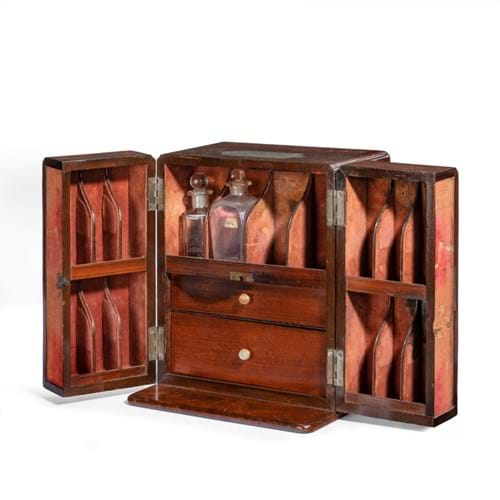The plan is to secure it so it can go on display at the museum of the former Royal Naval Hospital Haslar in Gosport, Hampshire.
The cabinet was spotted online at antique marketplace 2Covet where it is being offered by dealer Charles Wallrock at Wick Antiques in Lymington.
He has reduced the asking price and reserved it to give fundraisers time to find £15,500.

Dealer Charles Wallrock at Wick Antiques in Lymington has reduced the asking price of this medical cabinet.
The cabinet is dated 1803 and Beatty was appointed to Victory in December 1804 having previously served on a number of ships.
It is likely the cabinet had been at the Battle of Trafalgar.
The portable cabinet stands just over 10in (25.5cm) high and opens to reveal drawers and shelves, with two original glass jars remaining.
Beatty was unable to save Nelson, who died knowing that his forces had triumphed.
Surgeon Lieutenant Commander Jo Laird is leading the campaign to raise the money. She said: “When we saw the cabinet it struck us as such an important artefact that we ought to try and buy it for the new museum planned for the Haslar site.
“Beatty is a hugely important figure in the history of naval medicine and surgery and to have something connected with him and Nelson would be wonderful.
Wallrock said: “I bought it from a collector who had owned it for many years so its existence came as a surprise to many.
“Beatty was an Irish surgeon who rose through the ranks and served on a number of ships before becoming the surgeon on Victory just over a year before Trafalgar.
“He went on to become Physician of the Channel Fleet and was active in promoting the new vaccine against smallpox. Later he was appointed Physician at Greenwich Hospital and also Physician Extraordinary to King George IV in Scotland.
Visit the fundraising page here: https://www.crowdfunder.co.uk/save-a-part-of-royal-navy-medical-history






